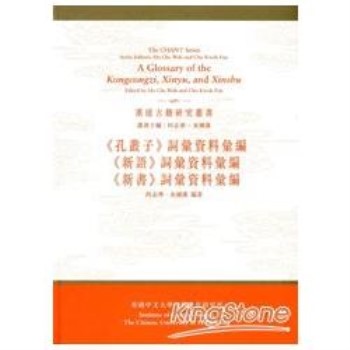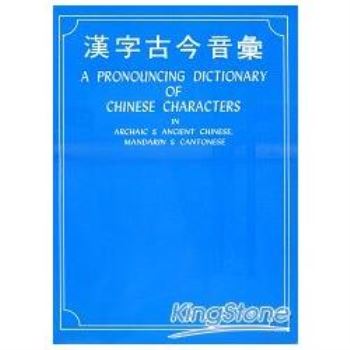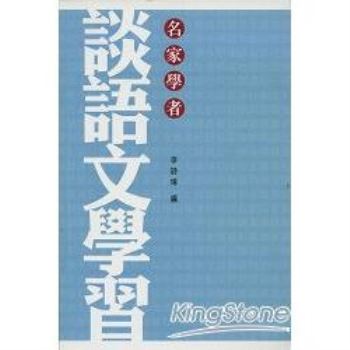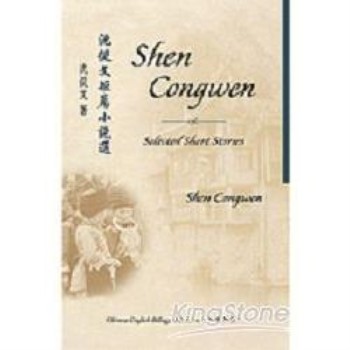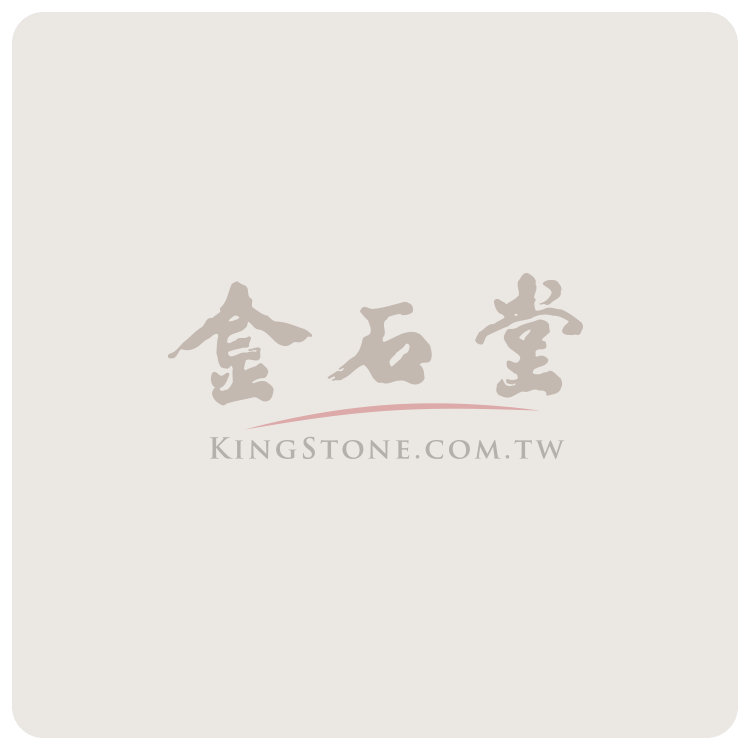-
排序
- 圖片
- 條列
【電子書】《孔叢子》詞彙資料彙編、《新語》詞彙資料彙編 、《新書》詞彙資料彙編
《漢達古籍研究叢書》第二十七至二十九種《〈孔叢子〉詞彙資料彙編、〈新語〉詞彙資料彙編、〈新書〉詞彙資料彙編》三書,是利用漢達文庫電腦檢索系統將詞彙輯錄,並統計不同數據,然後經由研究人員分別編纂《孔叢子》、《新語》及《新書》專用詞彙,及該三書詞彙僅見單一先秦兩漢典籍之材料。三書將有助學者進一步檢索先秦兩漢詞彙使用數據,並進一步探究先秦兩漢典籍語言特質,並據此開展更多歷時性、跨文獻之詞彙研究工作。
【電子書】漢字古今音彙
本書收集董同龢、高本漢、周法高三家所擬構之周秦上古音,高本漢、周法高二家所擬構之切韻音,並加註國音及粵音,按部首排列漢字。附錄之「國語標音補遺」開列《中文大字典》所載僻字和它們的讀音,以及《漢字古今音彙》沒有國語標音的字,並附有「高本漢、董同龢、周法高三家上古韻母擬音對照表」及「國語羅馬字和威妥瑪式羅馬拼音對照表」。
【電子書】名家學者談語文學習
要學好寫作,提高語文水平,為何會如此困難?學習語文為何老是這樣沉悶,到底如何才能學得有趣?前輩學者、作家都是語文造詣深厚,妙筆生花,他們是怎樣學習語文的?本書通過專訪十六位語文造詣達到爐火純青境界的學者和作家,了解他們學習語文的經驗、學習時遇到的困難及解決方法,以及一些自身的體會。通過他們的寶貴經驗,為我們指引一條學習語文的正確途徑,從而能夠更輕鬆地學好語文,多去欣賞語文的妙處。 本書訪問的名家學者陣容:國學教授:劉殿爵,羅慷烈中文系教授:何文匯,吳宏一,陳永明,楊鍾基,鄧仕樑,盧瑋鑾,佘汝豐,黃繼持哲學系教授:劉述先社會學系教授:金耀基醫學院教授:杜祖貽,梁秉中教育學院教授:周漢光小說家:劉以鬯
【電子書】香港粵語語法的研究(增訂版)
本書以結構學派理論模式為基礎,對香港粵語作全面性的探討和分析。初版六章,包括語音、句子的成分、謂補結構、謂詞詞尾、助詞和外來語。增訂版另加四章,討論句式、句子類型及詞類。本書對粵語中各種構詞造句現象,縷分條析,討論詳盡,觀察入微。書中材料來自六十年代的口語,是當時真實語言的記錄,亦可供研究歷史語法的學者參考。
【電子書】沈從文短篇小說選Selected Stories of Shen Congwen
Shen Congwen (1902?-1988) is one of the worlds great modern writers. He is also one of the finest Chinese prose stylists of all time. Literary critics and historians have offered several reasons for why Shen Congwen is a great writer. The foremost explanation is his power as a stylist. He could make the Chinese language beautiful. Some critics have praised Shen Congwen for creating characters with beautiful souls. Readers credit him with having described beautiful and fulfilling styles of life, even in materially primitive surroundings, that conjure up the "health and dignity" prized by the Crescent Moon writers. Other critics value Shen Congwen as a realist writer. He has written many works exposing the abuses of the military in the countryside, and the vanity of the urban bourgeoisie. His stories reveal the plight and the strength of the common people. Stories in this collection are: The New and the Old 新與舊The Husband 丈夫Staff Adviser 顧問官Sansan 三三Guisheng 貴生Qiaoxiu and Dongsheng 巧秀和冬生 Most of the stories come from Shens "classic" period, when he had already honed a fine writing style, and they are about rural folk from Shens native region, people he knew from experience. The contradictions seen here are between the "old" and the "new," and also between human values with enough integrity to nurture life, versus corruption that leads to the decline and death of a culture. It is not just a conflict between "good" and "bad." We can often see morals in Shen Congwens works, but they are subtle, and as a modern man, his sense of good and bad was too relative for him to be called a moralist. Even "barbaric" violence had its place in his ethic, if it were properly atoned for, as in the opening story of this collection. Moreover, he could always see good and bad in the same person. Shen Congwen was an optimist, a religious man who believed in the goodness of life and the universe, and in God, though his concept of God was abstract (sometimes he said it was precisely "the Abstract" that he loved, and I think this may be what he meant by God). Yet, Shen Congwen had his dark moments, as when he tried to commit suicide. In the pages below, I see contradictions and reversals in Shens Congwens portraits of "paradise," and even in his depictions of "corruption."
【電子書】漢語與文化讀本 Chinese Language and Culture An Intermediate Reader
This reader is designed for an intermediate-level Chinese course in which students not only develop proficiency in the Chinese language but also gain some knowledge of Chinese culture.It consists of twenty-two lessons, which are arranged according to their level of difficulty. Each lesson contains a core text and a reading text. The contents of the texts cover a wide variety of topics, including Chinese language structures and characters, Chinese customs, proverbs, holidays, social phenomena, religions, poetry and geography, as well as Chinese folklore. A list of questions for group discussion follows the text in each chapter to help students further explore issues related to Chinese culture and to their own lives.Grammar notes and exercises for relevant grammatical points are introduced after each core text to enhance students’ skills of reading, comprehension and writing. The grammar notes are a


